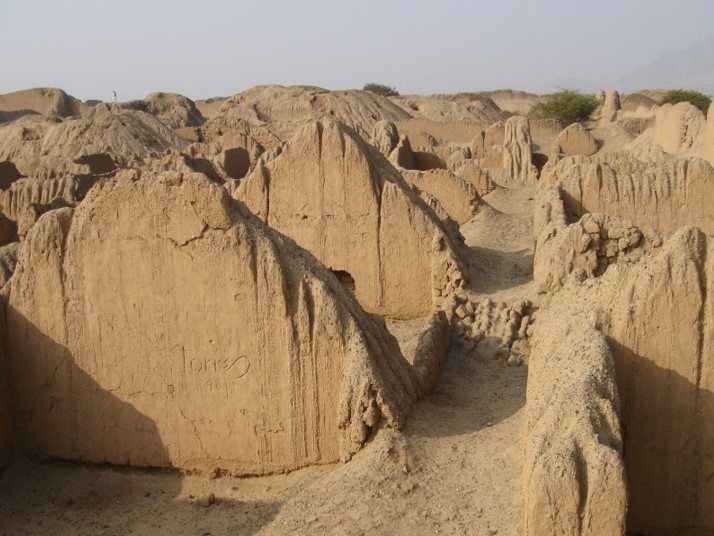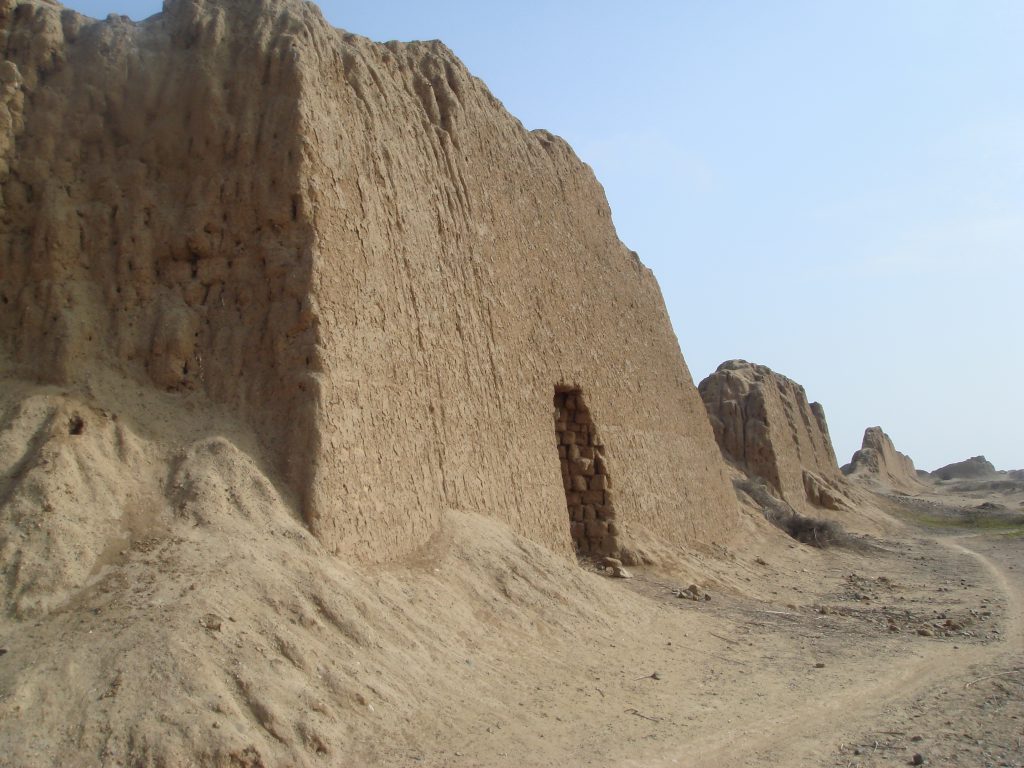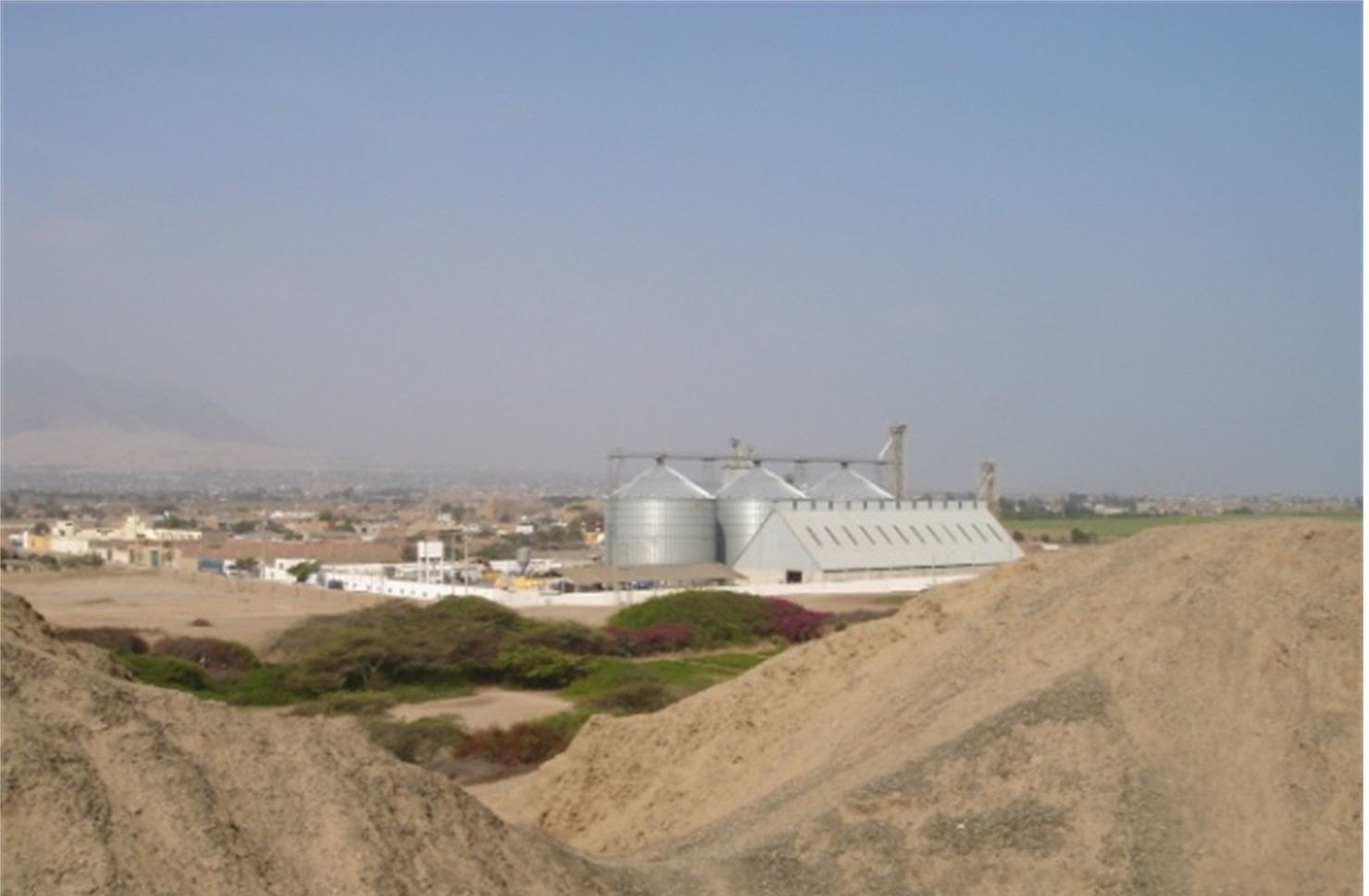THE CULTURAL PROJECT
The principal purpose of the Chan Chan Archaeological and Environmental Park is to safeguard the cultural and environmental landscape of this extensive settlement from deterioration caused by atmospheric agents, geological damage and anthropogenic factors. The project focuses especially on preserving the original form of the urban layout, the dwellings and religious constructions, the paths leading to the cultivated fields and the irrigation channels, as well as the settlement’s relations with the mountains and the sea that were the basis of the Chimú civilization’s social and religious life.
An equally important objective is to contribute to increasing tourism in northern Peru, as opposed to the traditionally better-known southern part of the country. Hence particular attention is paid to enhancing the unfired clay architecture, the temperate desert environment and the many archaeological sites unearthed in recent decades – which may be contrasted with the stone constructions and subtropical mountain setting of the now mythical site of Machu Picchu.
STATE OF PRESERVATION
The integrity of the archaeological complex has suffered considerable damage due to two main factors: the small area it covers compared to the original settlement and its definitive loss of uniqueness due to the presence of the Huanchaco – Trujillo road. Most of the irrigation systems, cultivated fields and paths leading to them have been completely lost – with the sole exception of the paths near the central area, which have been identified and recorded.
Fortunately, the site’s Exceptional Universal Value still survives in the abundant and varied types of architectural remains – structures with both religious and practical purposes, various urban and ceremonial paths, temples and agricultural units – thanks to which the integrity of the imposing urban structure and complex social organization of the ancient Chimú capital may still be experienced.
However, other negative factors result in gaps in the monument’s integrity, such as the use of poor building materials and damage caused by human actions and environmental circumstances, including the extreme climatic conditions caused by the El Niño phenomenon.
Lastly, there is the great problem that the cultural heritage’s visual integrity is threatened by the urban development of nearby Trujillo and the Huanchaco – Trujillo road which divides the archaeological complex into two parts, reconstituting and expanding the break created during the colonial period.













